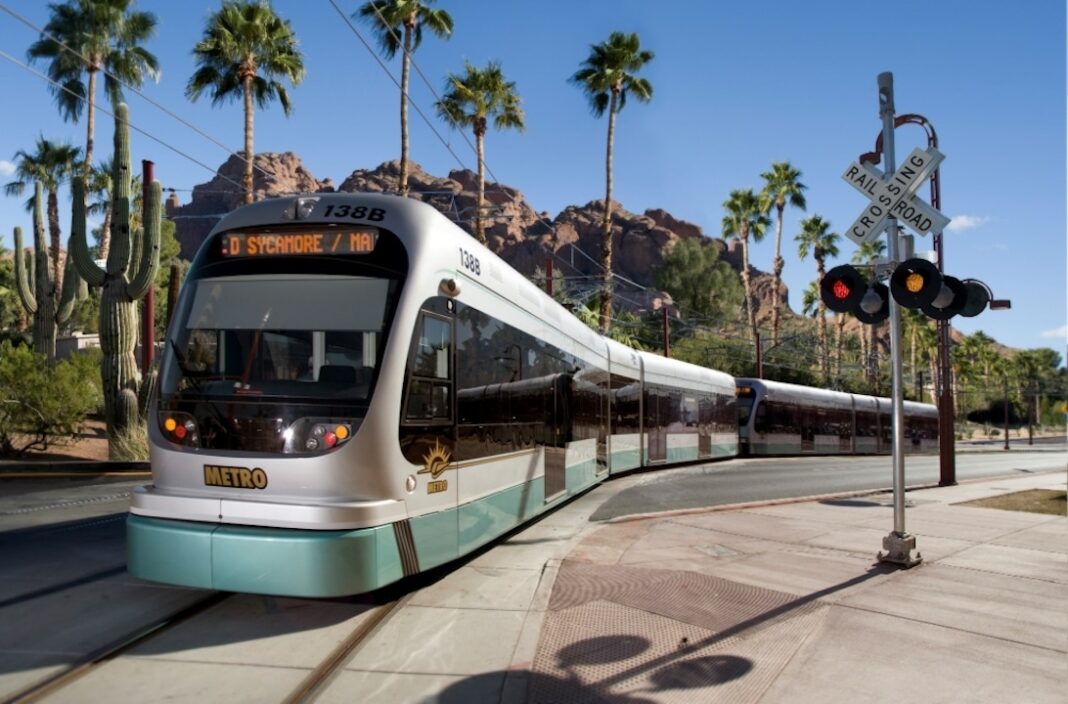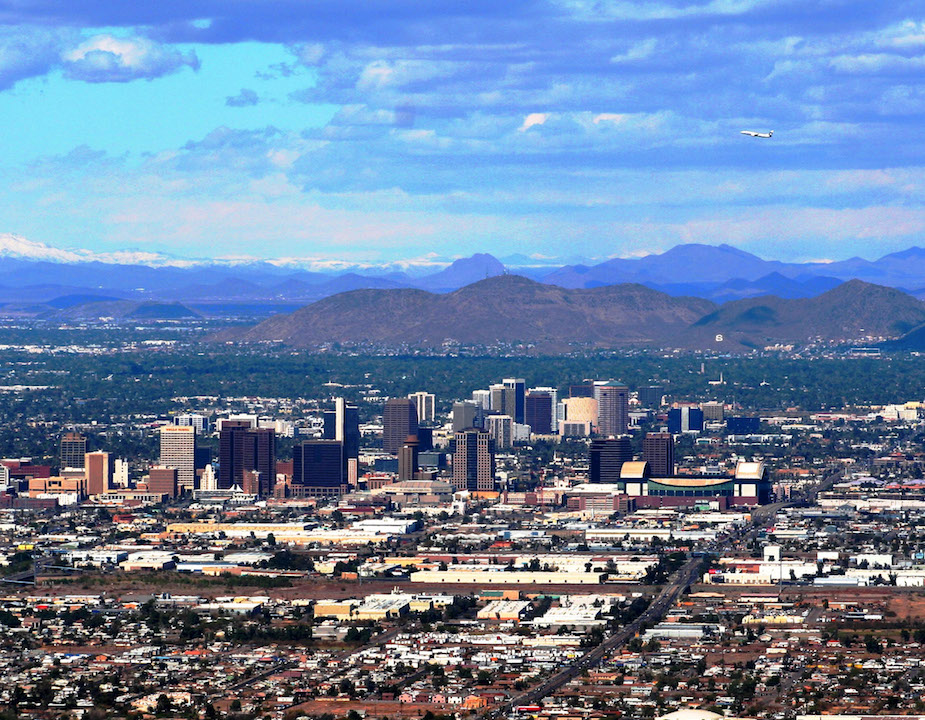Imagine this: a setting sun illuminating the city skyline while gorgeous desert mountain peaks create a majestic backdrop. Well, welcome to Phoenix. This desert city has so many things to offer, and its scenery is just one of them. From art and culture to sports and entertainment, Phoenix is picking up steam and bringing new residents to its city limits every year.
Join the fun and read our comprehensive guide to moving to Phoenix. What we’ll cover:
- Cost of living
- Phoenix neighborhoods
- Things to do
- Transportation
- Tips for moving to Phoenix
Cost of living
Considering relocating to Phoenix? Here’s some basic information about the average cost of living to keep in mind.
- Rent prices: the average cost to rent a 1-bedroom apartment is $950 and a 2-bedroom is $1,170. These rates make Phoenix a fairly reasonable place to rent.
- Utilities: the average cost of utilities for a 915-square-foot apartment is $118, and internet services range from $49-$85.
- Transportation: monthly transit passes range from $50-$64 for adults, depending on type of transit taken and distance traveled.
- Food costs: Phoenix residents spend roughly 12.1% of their household budget on food, just barely below the national average. Of this food budget, 59.1% is spent on meals at home, and 40.9% is spent on dining out. Phoenix is very similar to the national averages in these categories.
Phoenix neighborhoods
Of course, every cost of living calculation has to take into account the neighborhood. Here are just a few of the neighborhoods in Phoenix, but be sure to check out all of them.
- Downtown Phoenix: If you’re a sports fan, this is your hood. Downtown is where you can catch the Arizona Diamondbacks’ (MLB), Phoenix Suns (NBA), Phoenix Mercury (WNBA) and 6-time Indoor Football League Champions Phoenix Rattlers. Not a sports fan? This neighborhood also boasts the Phoenix Public Market, an open-air shopping, dining, and entertainment spot, plus art galleries in Copper Square.
- Desert Ridge: Like shopping? The crown jewel of this neighborhood is the spacious, outdoor Desert Ridge Marketplace. In addition to a striking number of shops and restaurants, this marketplace offers bocce ball courts, video walls where free movies are often shown, a splash pad for kids, and free wifi. With all these amenities, you can see why residents like to live in this hood.
- Willo: If you’re not quite ready to settle down into suburban life, but want to live in a quiet neighborhood, Willo is for you. This historic district features charming 1920s-style cottages and well-manicured streets, but also offers easy access to the excitement in downtown. Check out locally owned restaurants like People Pizza Pub and Switch.
- Garfield: Located just northeast of downtown, Garfield is an up-and-coming neighborhood with new restaurants and shops sure to please its residents. Gallo Blanco, which opened in 2017, is already a local hotspot, and fellow newcomer, Welcome Diner, is drawing in large crowds daily. Best of all, you can walk to downtown from this trendy hood.
- Coronado: This historic neighborhood features 1920s bungalows and 1940s ranch homes, plus one of the largest city parks, Coronado Park. The park boasts bbq grills, tennis courts, both baseball and softball fields, a playground, and picnic areas. It’s the perfect spot for a weekend get together or an after-work rec-league game.
Things to do in Phoenix
- Baseball fans will want to check out all 10 (yes, 10!) baseball fields that host 15 MLB teams during Spring Training.
- For the art-critic, head to Roosevelt Row Arts District where you can saunter through its local arts and crafts market on the first and third Friday of the month.
- Hike Camelback Mountain, a popular place to get a 360-degree view of the desert city below, and become a real local.
- Discover the city’s culture at the Phoenix Art Museum, now the largest art museum in the southwestern U.S. Hungry?
- Explore the food truck scene in Phoenix and grub on some tasty eats.
Transportation

Phoenix is a sprawling city, and, as such, a car is recommended. If you’re traveling within downtown or to specific parts outside of the city, though, you have a few more options. The Valley Metro features a rail line and bus system that is cheap, reliable, and efficient. It doesn’t cover all of Phoenix, so be sure to check your destination and see if you can utilize the metro system.
Tips for moving to Phoenix
- Do: check out the local parking situation if you plan on having a car in the city. Some neighborhoods require a resident permit to park, which may mean changing your license and/or registration.
- Don’t: move into an apartment without checking out its air conditioning situation. Phoenix temperatures get searingly hot and you don’t want to be without an A/C.
- Do: invest in both cold and warm-weather clothing. Average temperatures in the summer peak above 100 degrees, but winter temperatures can drop to the 40s.
- Don’t: rent based on an online ad without seeing the apartment in person. There are a lot of rental scams, and you need to protect yourself. Rent with Zumper and put your worries at ease.
- Do: consider your commute to work before renting an apartment. Public transportation within Phoenix can be sparse, and no one likes to sit in traffic for an hour. Research the route you’ll take between home and work to make sure it’s something you’re comfortable doing everyday.
Phoenix is a unique and up-and-coming place to live. With reasonable rents, historic neighborhoods, and ample outdoor activities, this city is ready to impress you. Follow this guide and make your move to Phoenix a smooth one.
Living in Phoenix means you get to enjoy all its perks. Stroll through its active arts and culture district, hike its mountains, and catch a Spring Training game all in the same day!




